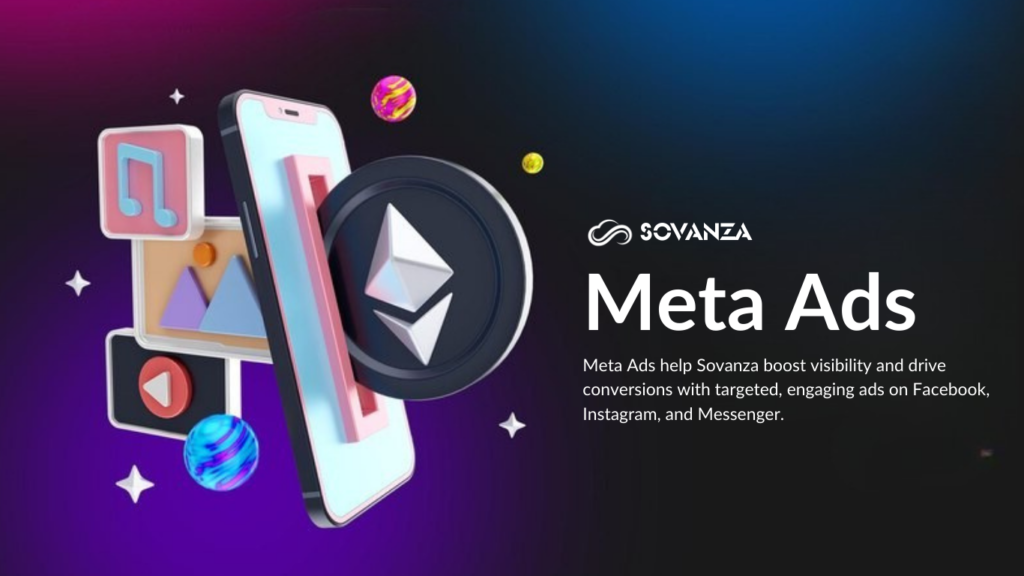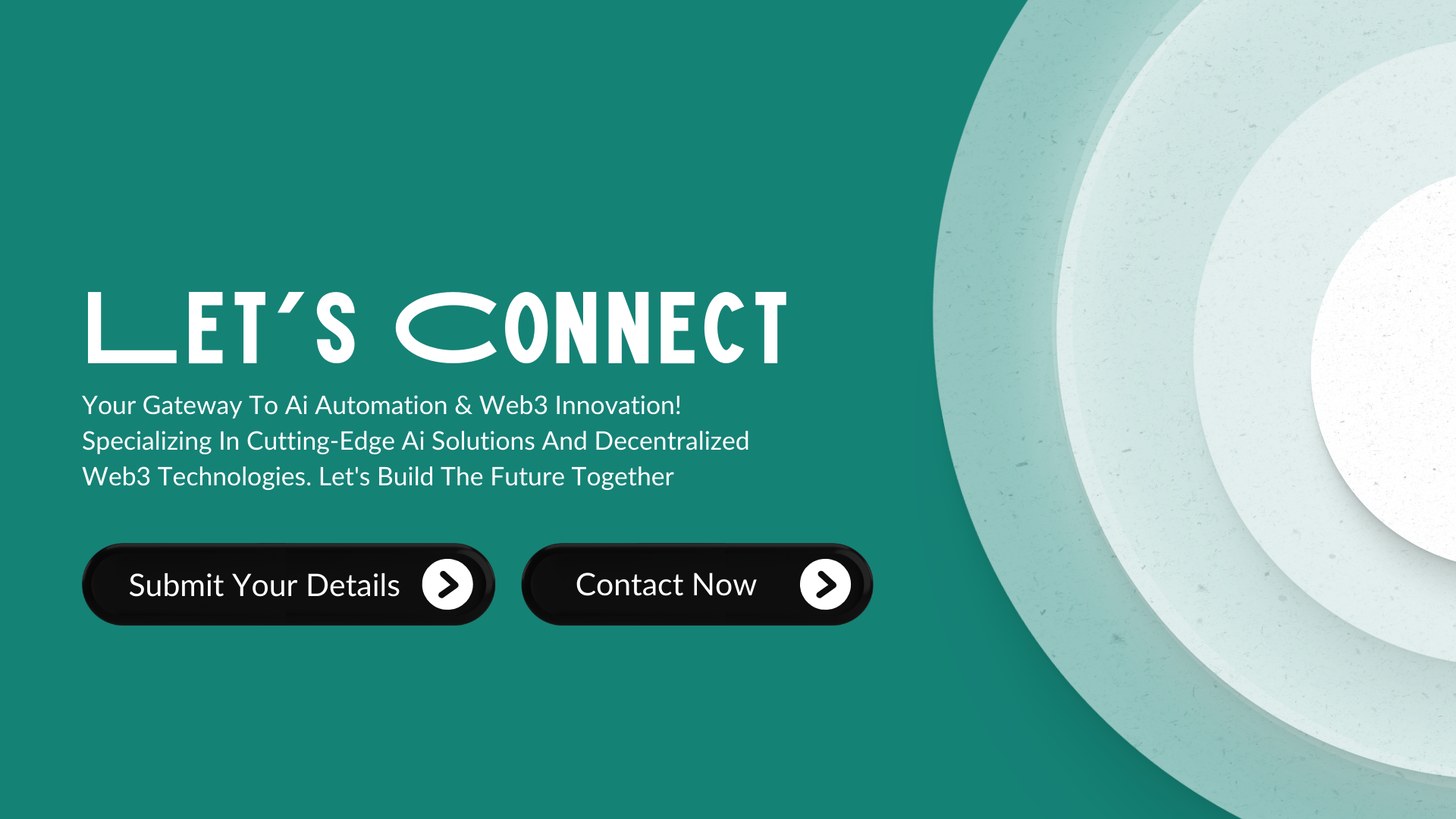
Introduction
Facebook (now Meta) powers Meta Ads, a potent advertising platform for businesses trying to reach a large audience. To guarantee that the appropriate audience views their advertisements, companies might utilize Meta to accurately target users on Facebook, Instagram, and Messenger.
It is a fantastic opportunity for companies like Sovanza to increase brand recognition, engagement, and conversions throughout the United States. Meta advertisements distinguish themselves by offering a variety of ad formats, including display, video, and carousel advertisements, together with strong targeting features.
Utilizing Meta’s advanced analytics, companies can monitor campaign effectiveness instantly, simplifying the process of modifying strategies and optimizing outcomes. This article will examine the various types of Meta Ads and their essential characteristics, along with expert advice on how companies like Sovanza can leverage this advertising platform to thrive in the competitive US marketplace.
What Are Meta Ads?
Meta Ads, driven by Facebook (now Meta), enable companies to design precisely targeted advertisements on Facebook, Instagram, Messenger, and other platforms. With millions of active users, meta-ads represent one of the most powerful methods of reaching potential customers and boosting conversions.
Why Meta Ads Are Gaining Popularity
It provides extensive reach, excellent targeting capabilities, and the functionality to monitor performance in real time. For companies in the USA, it offers an effective method of promotion, whether you’re focusing on big cities or specialized local markets.
Types of Meta Ads
Regarding Meta Ads, different ad formats are available, each offering distinct advantages and uses. Suppose you aim to boost brand recognition, connect with a targeted audience, or enhance conversions in the USA. In that case, Meta provides various ad formats to assist you in achieving your marketing objectives. Let’s examine some of the most well-known and impactful types :
Display Ads
Display Ads are banners that appear in the user’s feed, stories, and sidebars. They are excellent for quickly capturing attention, making them perfect for companies in the USA aiming to enhance brand recognition or advertise a special deal.
Video Ads
Video advertisements enable companies to convey more comprehensive messages in an appealing format. With more than 2 billion active users on Facebook and Instagram, video advertisements are a superb method of connecting with a large audience in the USA.
Carousel Ads
Carousel Ads allow companies to display several images or videos within one advertisement, providing a more engaging experience for users.
Key Features of Meta Ads
It offers powerful targeting options, allowing businesses to reach specific audiences based on demographics. They also provide various ad formats like image, video, and carousel ads to enhance engagement.
Targeting Capabilities
A key strength of Meta Ads is its targeting capabilities. You can aim your audience according to age, location, interests, behaviors, and life occurrences. For instance, if you’re a company based in the USA, you can specifically reach out to Californian clients who are into outdoor pursuits or athletic activities.
Customizable Campaigns
It allows businesses to design their campaigns based on their goals, whether to drive traffic, increase brand awareness, or generate sales. You can choose from various ad formats, including image, video, carousel, etc.
Analytics and Reporting
With Meta Ads, you can track every aspect of your campaign in real time. It allows businesses to understand how their ads perform and make quick adjustments to optimize their efforts. This data-driven approach ensures better audience targeting, higher engagement, and improved return on investment (ROI).
Benefits of Meta Ads for Businesses in the USA
It provides cost-effective solutions, fosters customer engagement through direct interactions, and ensures broad reach across multiple devices and platforms, making it ideal for businesses in the USA.
Cost-Effectiveness of Meta Ads
A key advantage of Meta Ads is that they are less expensive than conventional advertising techniques. Whether you run a small business or a large corporation, it provides adaptable pricing suitable for any budget. With precise targeting and performance tracking, you can optimize your ad spend to achieve maximum results at a lower cost.
Enhanced Customer Engagement
It allows for direct interaction between businesses and customers. Features like comments, shares, and likes make engaging with your audience and creating a community around your brand easy. Additionally, it provides messaging options, enabling real-time communication through Facebook Messenger and WhatsApp.
Wide Reach Across Platforms
Meta Ads function on all devices, including smartphones, tablets, and desktops, guaranteeing that your ads reach your audience regardless of their location. This cross-device compatibility ensures a seamless user experience, maximizing engagement and conversion opportunities.
How Do Meta Ads Work In USA?
Meta Ads works in the USA by leveraging Meta’s vast user base and the immense amount of data the platform collects on its users. Developers create campaigns through the Ads Manager, selecting objectives, targeting options, and budgets. The platform then shows ads to users that fit the defined criteria.
Overview of Meta’s Advertising Platform
Meta’s advertising platform is easy to use; newcomers can navigate it successfully with the appropriate understanding. Advertisers can track their campaigns, analyze comprehensive reports, and make changes to enhance outcomes.
Why Choose Sovanza For Meta Ads
It provide an affordable and effective advertising option. They offer sophisticated targeting features focusing on demographics, behaviors, and interests to connect with particular audiences. With billions of engaged users on platforms such as Facebook and Instagram, companies like Sovanza can achieve extensive visibility.
The range of advertisement formats and live analytics enable innovative interaction and campaign enhancement. In summary, meta ads offer companies an effective means to reach their marketing objectives and enhance outcomes, positioning them as a vital resource for brands such as Sovanza aiming to expand and thrive online.
Advanced Tips for Targeting the USA with Meta Ads
To stand out in the competitive US market, businesses like Sovanza can use advanced Meta Ads strategies to gain a significant edge. Here are some expert tips:
Video Ads and Stories
Video ads are incredibly effective in the USA, especially on Instagram Stories and Facebook platforms. They capture attention quickly and can deliver your message more engagingly. For Sovanza, incorporating eye-catching videos into your ad campaigns can increase engagement and conversion rates.
Influencer Marketing
Collaborating with US-based influencers can significantly boost Sovanza’s brand credibility and reach. Influencers in the USA have highly engaged audiences, and partnering with them can help your brand gain trust and visibility, particularly when you’re looking to connect with younger, trend-conscious consumers.
Retargeting
Not every visitor makes a purchase on their initial visit, which is why retargeting ads are useful. By employing Meta’s retargeting tools, Sovanza can reconnect with users who visited the website earlier but did not make a purchase or complete a desired action. This approach can be very successful in converting potential customers into devoted ones.
Conclusion
In summary, Meta Ads offer a unique chance for companies to connect and interact with a precisely targeted audience, rendering them a vital resource for achieving success in the competitive USA market. Utilizing Meta’s varied ad formats and sophisticated targeting features, companies such as Sovanza can customize campaigns to achieve particular objectives—enhancing brand visibility or improving customer interaction.
By employing tactics such as video advertisements, influencer collaborations, and retargeting, Sovanza can enhance its visibility in the online sphere and forge significant relationships with prospective clients. It offers a robust solution for brands aiming to succeed in the fast-paced online marketplace, delivering affordable and effective advertising on platforms like Facebook and Instagram. Do you have queries or wish to understand better how we can assist in expanding your business? Don’t hesitate to contact our team at Sovanza. Today, we will assist you in the beginning!
FAQs
1. What are Meta Ads, and why should I use them?
Meta Ads are advertisements aimed at specific audiences on Facebook, Instagram, and Messenger. They assist companies in accessing a vast, targeted audience and boosting conversions, making them perfect for enterprises in the USA.
2. How do Meta Ads increase customer engagement?
Meta Ads enable direct engagement via comments, likes, and shares, assisting businesses in connecting with their audience and fostering a community around their brand. Additionally, businesses can use Meta Ads’ retargeting features to re-engage potential customers and boost conversion rates.
3. What types of Meta Ads are available?
Meta provides Display Ads, Video Ads, and Carousel Ads. Select the format that aligns with your campaign objectives: Video Ads for interaction, Display Ads for instant visibility, and Carousel Ads for presenting various products.
4. Can I track Meta Ads performance?
You can track Meta Ads performance using Meta Ads Manager and Meta Business Suite. These tools provide detailed analytics, including metrics like impressions, reach, clicks, conversions, cost per result, and return on ad spend (ROAS). You can also set up Facebook Pixel to track user actions on your website and gain deeper insights into your campaign effectiveness.
5. What advanced strategies should I use for targeting in the USA?
Use Video Ads, collaborate with influencers, and implement Retargeting Ads to re-engage visitors. These strategies help businesses like Sovanza stand out in the competitive US market. Additionally, leveraging AI-driven analytics and A/B testing can further refine ad performance and maximize conversions.

